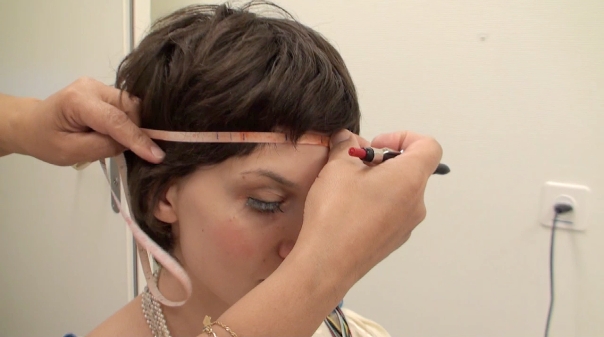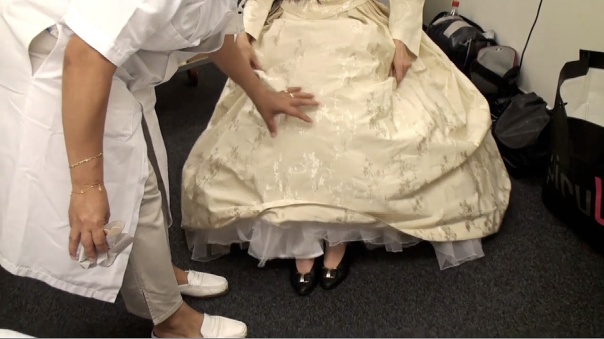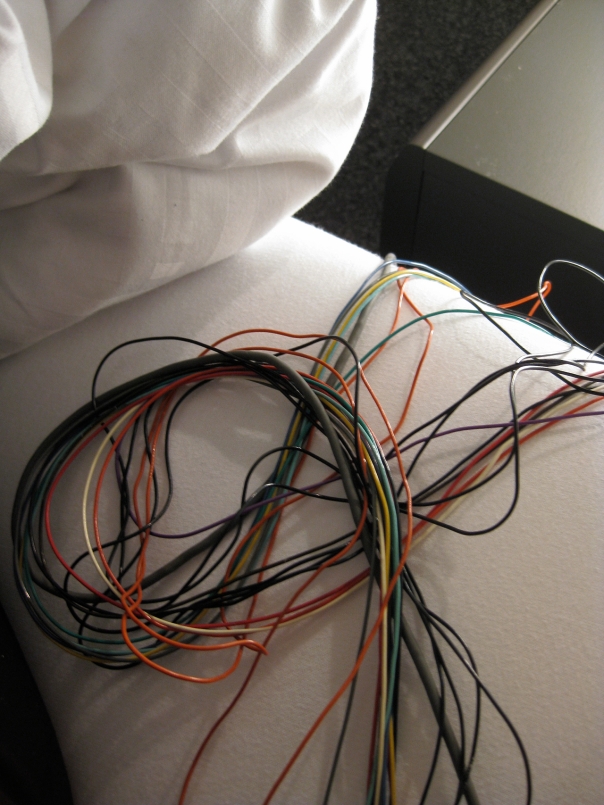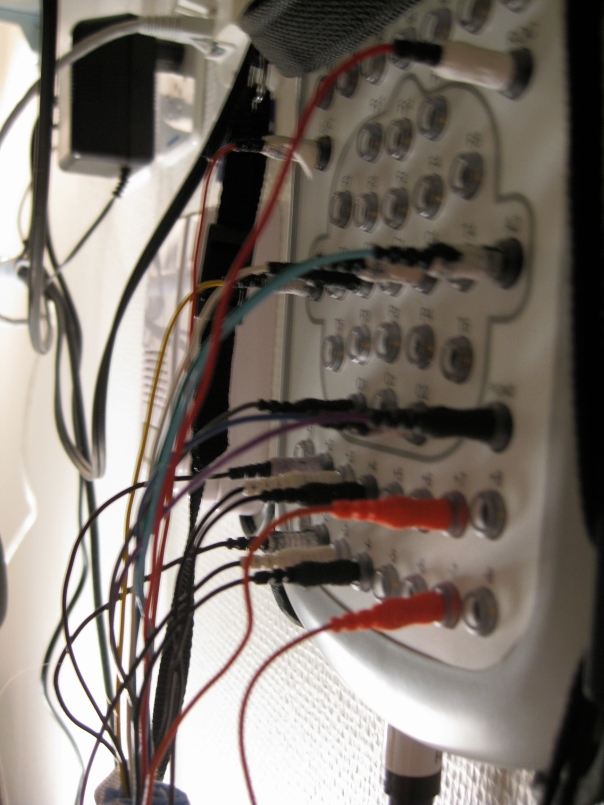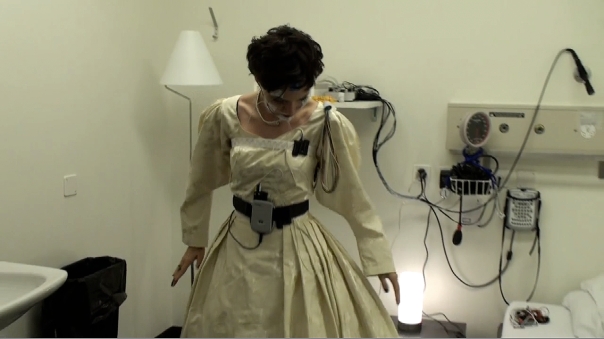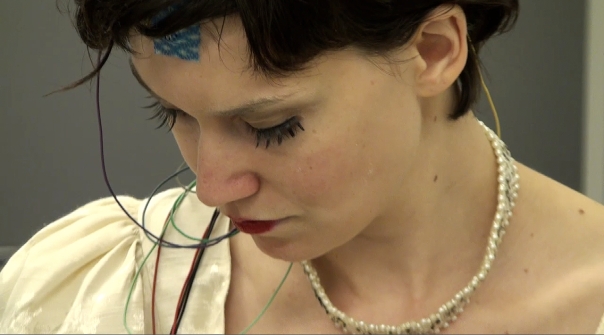*
*
*
*
[Some Theory behind “Assembling the Morrow”]
poetry has had a difficult relationship with sleep.
since shakespeare and before, poets of the western tradition have likened the behaviour to a kind of death (“for in that sleep of death what dreams may come”), yet with the invention of the EEG it became clear that sleep, in a manner of speaking, is very much awake. hans berger interfaced the electricity of the brain with waves in the early 20th century, and sleep became a legible phenonemon, groups of neurons firing in a visible choir. assumptions about the natures of sleep as restive and waking as active became instantly problematized – sleep can be as active as the spike of a k-complex rising up from a sea of theta; waking, as quiet as a cup of tea perched on a windowsill beside a blowing curtain. lyn hejinian, in her essay “strangeness,” realizes the difficulties of writing sleep when she speaks of dreaming as a problem of description: one’s written accounts of dreams, she posits, are always unsatisfactory. when i embarked
on a 9 month residency to work with scientists of sleep at the centre for integrative genomics in lausanne, switzerland, i started with these two points: that, 1, sleep is closer to waking than to death (much to the consternation of our romantic metaphors) and, 2, sleep is a problem of description. as i quickly came to see at the laboratory, sleep is also, in the most part, a mystery to the lens of science: though we spend a third of our lives doing it, we still don’t exactly know why. mahowald & schenck: “with the discovery of REM sleep in 1953, it became apparent that sleep is not a unitary phenomenon, but rather consists of completely different states, and each state is an active, rather than quiescent, process”. according to the EEG,
the difference between sleep and waking lies in little more than the flex and rhythm of an electric wave. a line that zigs. one of the main questions behind the experiment/long poem entitled assembling the morrow, therefore, is what happens when the line of berger’s wave (in sleep) turns into a line of poetry, an act of focused consciousness? since words are essentially awake, sleep awakens beneath them. at the same time, poetry itself is forced to change, written not by the principles of ink or lead but electroencephalography. about 9 months ago
when i began, i would write at night, as an experiment, until nights tweaked into the shimmer of days, footprints of light trailing tracks of shadow between. night was writing; day, the clichéd beauty of lausanne against the sterility and mystery of a dish of cells. syringes, papers, computers, coffee, volcanic ash. a wire’s line of waves curved into a line’s wrist of sentences (half past four and asking, what is the difference between a sentence and a line?) (between a line and a wave?) (interfaces, all, stretching like gauze over a thing we cannot define or see). one hand over another, an event horizon shows us what cannot be shown, it is a likeable geometry that covers up a mystery stretching infinitely behind it (but science hates a mystery) (but
poetry feeds from it). according to jonathan c.w. edwards: “in 1972, horace barlow made some suggestions about the number of elements of information required in various parts of the brain for a human percept. the suggestion was that an experience would be composed of about a thousand elements of information, which barlow portrayed as, ‘like words, having the special property that they lead to an economical representation’. thus, although ‘a picture is worth a thousand words’, a thousand words (~5kbytes) would carry information more economically than the necessary array of pixels (?~1mbyte). in barlow’s concept each element of information was associated with the firing of a cell; ‘an active neuron says something of the order of complexity of a word’.” here,
edwards suggests words as a more viable, more economic way of visualizing biophysical space than pixels or lines or any geometric model. words become a powerful semantic interface over something we cannot (as yet) possibly encounter. as william james put it: “the appearance needs the reality in order to exist, but the reality needs the appearance in order to be known.” so much is guessed at by the quality of its surface. to replace brainwaves with words is to inflict upon that wave all the luggage that a sentence can carry: narrative, bias, artifice,
depth. when i say waves, i mean my own and i mean, of course, in sleep. using the self as subject is generally frowned upon in biology: it is taboo to be both researcher and participant, subject and object, author and character, pathologist and pathologized, to be both sides (at once) of the same coin. when i went to the chuv sleep lab, donned that exoskeleton of electrodes, i became of myself another. there is nothing simultaneously more intimate and more unfamiliar than looking into the eeg of one’s own brain. there is nothing simultaneously more intimate and unfamiliar than sleeping. the singular ‘i’ of the waking day
self fades into the plural ‘i’ of the night’s sleeping selves. it is a science and an art (two sides perhaps of the same coin) to develop a (visual) (visible) method of writing to reflect the brainwaves of a sleeping subject. each alpha theta delta and sigma must be put into a series of words and these words form a poem. a student of william james, gertrude stein developed a language/poetics of consciousness itself, severing words from their proper definitions: “act so that there is no use in a centre. a wide action is not a width. a preparation is given to the ones preparing.” hers is a potential model by which to form a poetics of a brainwave. the tropes of repetition and parataxis reflect the repeating structure of the eeg, of our bodies, too, stuck within their own circadian and ultradian rhythms, recurring,
replaying. as i stated before, my task at the centre for integrative genomics was to turn sleep into a kind of poetry: setting out to do this required embracing illegiblity, keeping it intact; to describe the poem assembling the morrow should remain a problem of description also to the reader: to emerge from a video screening of a poem where words crest in and out of various degrees of illegibility, one is forced to confront the limits of their own knowledge as reflected in the (un)readability of words sculpted to the brainwaves of a sleeping subject. raoul hausmann: “we call this process photomontage because it embodied our refusal to play the role of artist. we regarded ourselves as engineers, and our work as construction: we assembled [in french monteur] our work, like a fitter.” to assemble a morrow is to put together the next coming day using a diverse montage: history, technology, biology, poetry, to create the new, to hold it in that space, unwaking, even as it longs to stutter towards the old. sleep, like grammar, is essentially mysterious: the process lies in unravelling (where every line must have an electricity) (every) (half-
thought a frequency).
*
This is the second of three posts that comprise Sandra Huber’s SLEEP/ WRITING/ ROOMS. Part 1 is here.




















